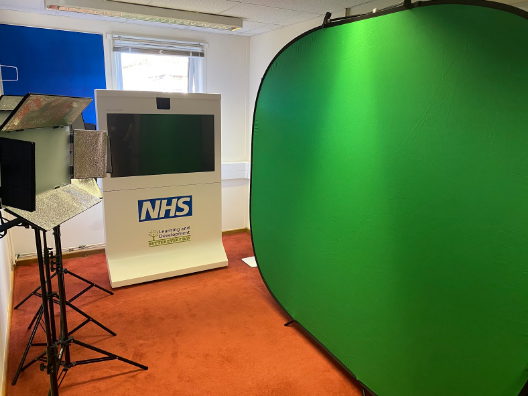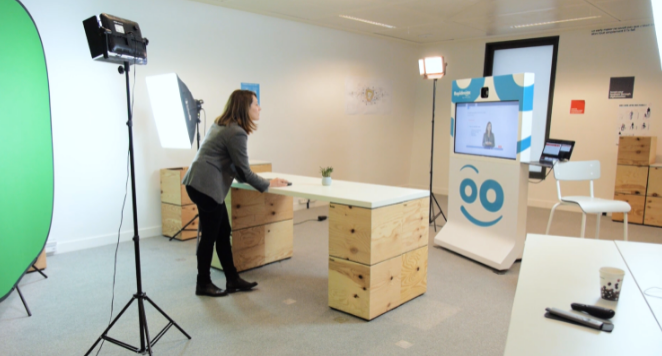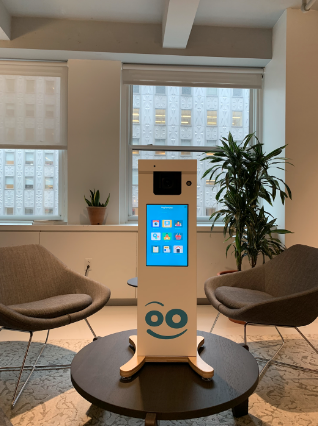How to create engaging employee videos
Video is the most effective way to learn and communicate at scale. When people watch a video, they recall about 95% of the message in comparison to written forms of communication. What’s more, 66% of people actually prefer to consume information in video form. This is a particularly strong opinion amongst those who don’t work at a desk and simply don’t have time to sit and read pages of text.
The past year has seen a myriad of employees shift to remote working, transforming traditional operating procedures and making employee engagement a constant challenge. Hence, a great number of companies and organisations are now beginning to appreciate the importance of video for training and communication, which is perhaps why you’re reading this today. However, very few people produce high-quality videos that efficiently maximise employee engagement while simultaneously educating them on the required knowledge and skills they need to do a good job.
So, why do we struggle to create engaging employee videos?
First and foremost, we tend to begin by producing training videos on our phone, tablet or laptop, which can not only be challenging, but often provides poor-quality results. Yet, on the other hand, setting up a recording studio and producing high-quality videos is time-consuming and can be challenging without internal expertise, and to make matters worse, sourcing video creation externally is expensive, especially when you want to create large volumes of content.
So, the question remains, how can you produce engaging employee learning videos? We have some ideas.
There are a number of different methods that can be used to create engaging videos, however, there are a set of 10 universal tips that we are confident will set you on the right path for the production of engaging employee videos.
Don’t skip the creation and preparation stage.
Arguably the most important step of producing engaging videos is the very first step: preparation.
The pandemic, unfortunately, forced many businesses online quickly, encouraging staff to formulate new content in a short period of time without pausing to consider if what’s being created is engaging. It is crucial to focus on the content at hand and start right at the beginning:
Begin by mind mapping your ideas and choose your best one; try not to go with the first idea you think of.
Plan, plan, plan. Not only will this ensure that you meet your deadline, but it will also set the direction, establish priorities and guarantee you are communicating the required message.
Unless you are adept at improvisation, write a script. This guarantees you won’t miss anything out while recording.
Rehearse it, and rehearse it again until it's how you want it.
Keep it short, simple and easy
Humans have a surprisingly short attention span, with optimal viewing time ranging between 6-9 minutes. As always, you should prioritise quality over quantity during the production process, and we’re not just talking about the literal video quality (1080p). It is essential that your videos avoid extensive fillers, keep sentences short and succinct, and include only relevant content.
Divide it into sections
If your video is going to be longer than 6-9 minutes, it is imperative that you split the content into sections. Let your audience know what’s coming at the beginning and give them the opportunity to navigate the content, as well as pause it for a break.
Include a summary at the end of the video to reiterate your points.
It’s likely that during a video some audiences will get lost or forget something along the way, even if you follow all of these steps. It’s a well-established fact that repetition is fundamental for memory retention, therefore providing a summary enables you to reinforce key points and encourages audiences to store information in their long-term memory.
Include complementary text
Using subtitles, text or graphics that come in to support what's being said on the video not only makes it more accessible but also resets attention span, increases audience retention and ultimately keeps audiences watching and engaged for longer.
Make it interactive
Using interactive elements such as asking a question, or incorporating a call to action at the end of the video, accelerates any learning process by forcing audiences to remind themselves of what they have just learnt.
Practice good body language
Body language supports audience engagement and tends to get lost while educating employees online. Standing up, stepping back from the camera and using your body to present learning material keeps audiences engrossed more than you might think. In their book, The Classroom X-Factor (2011), Garner and White claim that “gesture and body language” is crucial to support the production of meaningful and immersive learning experiences.
Enjoy yourself and keep it fun
Employee knowledge videos are never going to be as entertaining as Netflix. But, using elements of humour and showing your personality while filming not only makes the content enjoyable for you to make but will almost always guarantee an increase in engagement levels.
Top tip to note: Keep the tone of your voice upbeat until the end of a sentence, where it should go down in order to signify the end of a point, allowing the viewer’s brain to acknowledge it’s at the end.
Invest in good lighting, a stable camera and microphones
Making use of good-quality equipment is a fundamental component of engaging employee videos, regardless of the topic.
Luckily, we have the perfect solution for this step: Rapidmooc.
Rapidmooc is a company that offers simple, affordable, all-in-one video studios, providing anyone with the tools to produce professional-quality learning videos at scale. The studios are all built with a variety of recording modes (green screen, picture in picture, augmented reality, live streaming), as well as post-production and inbuilt teleprompter technology for a pre-written script, which offers seamless video production in minutes.
In fact, Rapidmooc provides a complete solution for all of the steps we have suggested above. For example, the Dorset HealthCare University NHS Foundation Trust received their Rapidmooc Studio Pro in December and are now using it for the NHS vaccination programme. The Rapidmooc studio has been an integral part of the training for deskless teams across the country, producing simple, interactive and engaging videos for staff who are implementing the vaccine.
Over 300+ companies and universities enjoy making videos with Rapidmooc, including the Lloyds Bank, EDF Energy, The University of Oxford and L’Oreal. Do you want to be one of them?
Contact Rapidmooc’s UK manager, Christopher Weeks: chris@rapidmooc.com for more information or a free demo.
Get started!
Starting is perhaps the hardest part. But once you start, the more videos you create, the more you learn and the more you improve. So get going!
Want to unlock the performance of your frontline teams?
Ocasta Engage unlocks the performance of your frontline teams through comms, microlearning and knowledge. Customers include Next, Virgin Media O2, Burgertory and Tesco Mobile, who have achieved desirable results, including;
98% engagement rates
3.75x more recognition amongst their teams
94% of all comms being read.







